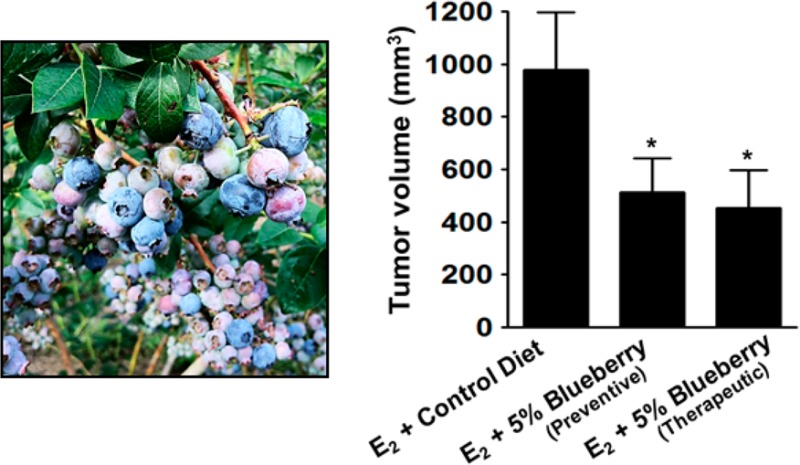- Record: found
- Abstract: found
- Article: not found
Chemopreventive and Therapeutic Activity of Dietary Blueberry against Estrogen-Mediated Breast Cancer

Read this article at
Abstract

Berries are gaining increasing importance lately for their chemopreventive and therapeutic potential against several cancers. In earlier studies, a blueberry-supplemented diet has shown protection against 17β-estradiol (E 2)-mediated mammary tumorigenesis. This study tested both preventive and therapeutic activities of diet supplemented with whole blueberry powder (50:50 blend of Tifblue and Rubel). Animals received 5% blueberry diet, either 2 weeks prior to or 12 weeks after E 2 treatment in preventive and therapeutic groups, respectively. Both interventions delayed the tumor latency for palpable mammary tumors by 28 and 37 days, respectively. Tumor volume and multiplicity were also reduced significantly in both modes. The effect on mammary tumorigenesis was largely due to down-regulation of CYP 1A1 and ER-α gene expression and also favorable modulation of microRNA (miR-18a and miR-34c) levels. These data suggest that the blueberry blend tested is effective in inhibiting E 2-mediated mammary tumorigenesis in both preventive and therapeutic modes.
Related collections
Most cited references33
- Record: found
- Abstract: found
- Article: not found
Anthocyanins and their role in cancer prevention.
- Record: found
- Abstract: found
- Article: not found
MicroRNA—implications for cancer
- Record: found
- Abstract: found
- Article: not found
